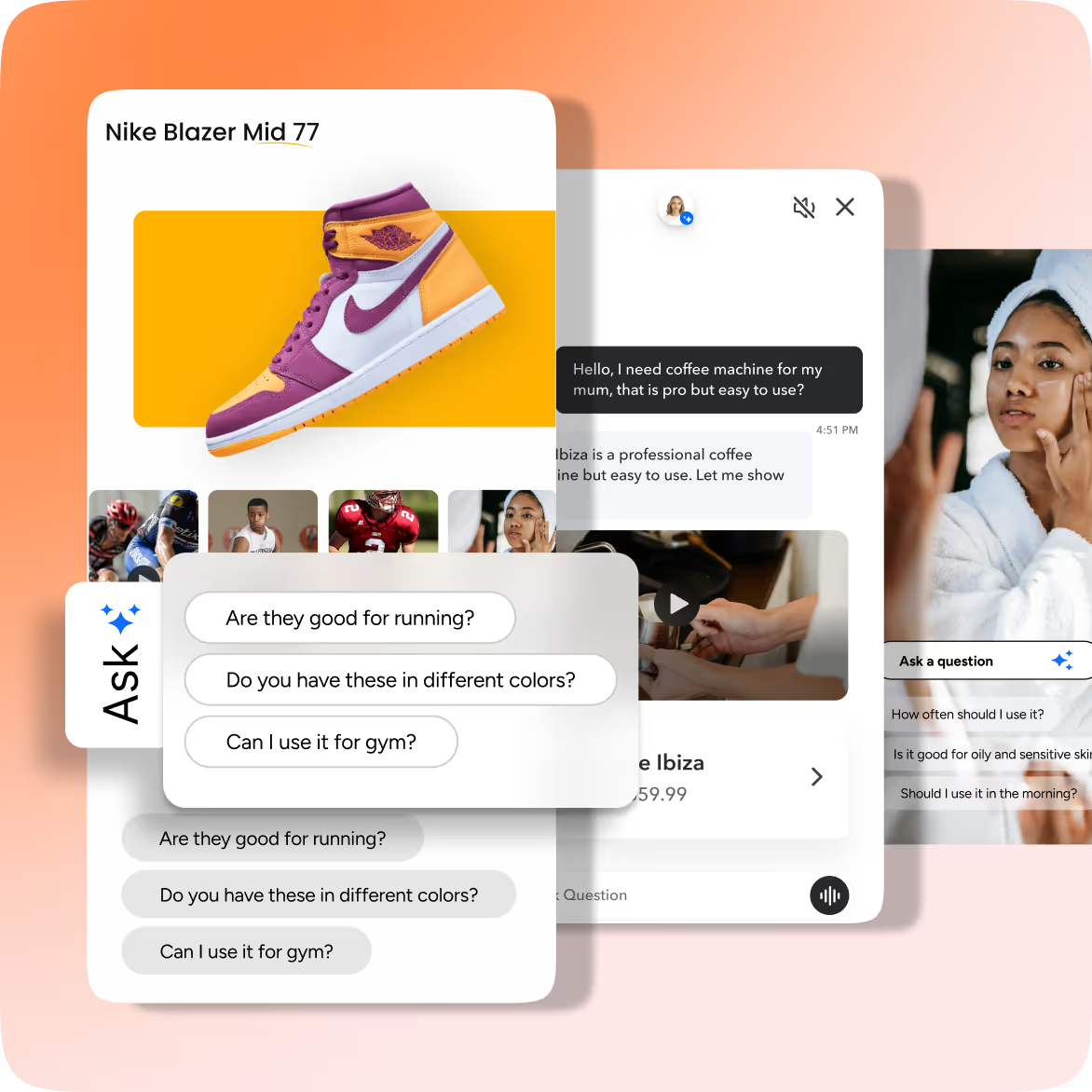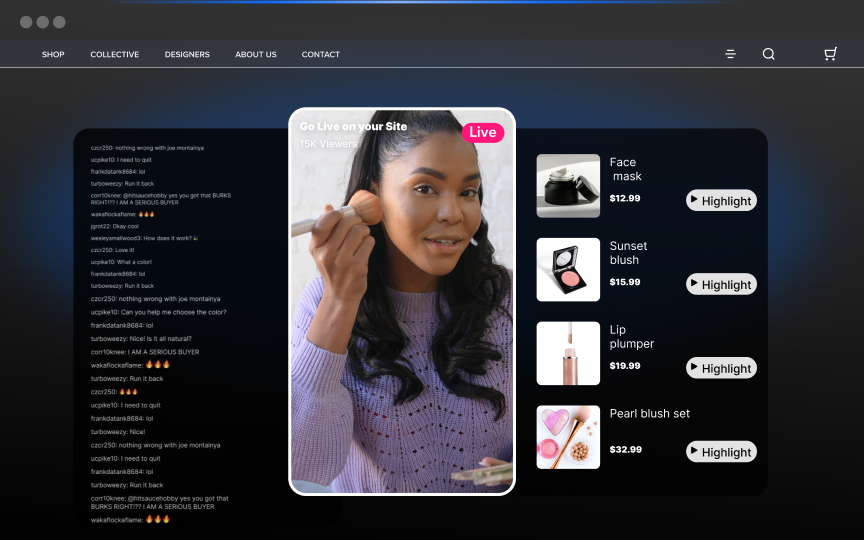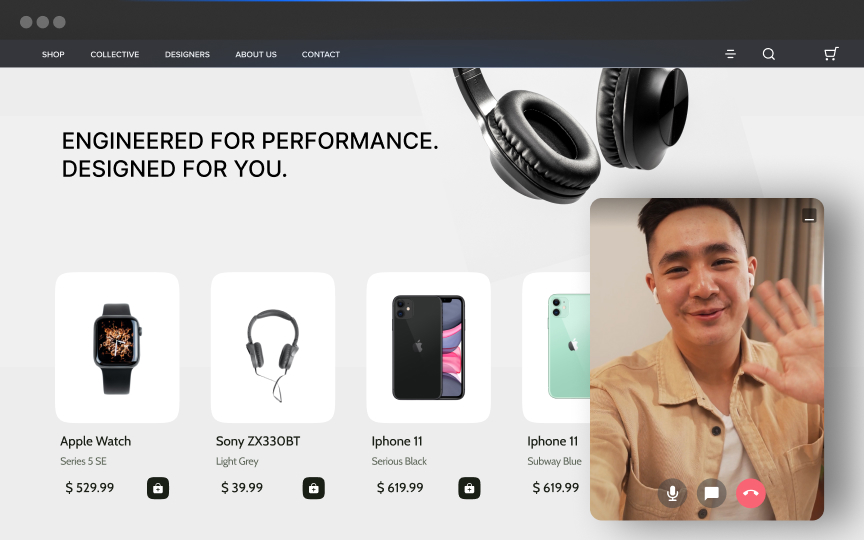In the rapidly evolving digital landscape, a strong ecommerce growth strategy is critical to boosting online sales and customer engagement. Drawing from recent industry insights, this article outlines 12 strategies to help scale your ecommerce business and outperform the competition.
Strategy 1: Think Mobile-First
Optimize your ecommerce site for mobile users by ensuring it’s responsive, fast, and easy to navigate, with mobile-friendly features like one-click checkouts and digital wallet support.
Optimize for Mobile Experience
Ensure your website is fully responsive and functions smoothly on all devices. Focus on intuitive design, fast load times, and easy navigation. Aim for page load times under three seconds to prevent site abandonment.Key steps to optimize your mobile experience:
- Responsive Design: Implement a layout that adapts to various screen sizes.
- Simplify Navigation: Use clear menus and search functions for easy product discovery.
- Fast Load Times: Optimize images, minimize code, and use caching to boost speed.
Mobile-Friendly Features
Incorporate mobile-friendly features like one-click checkouts and digital wallet support. Use Progressive Web Apps (PWAs) for faster experiences and Accelerated Mobile Pages (AMP) to reduce load times. Regularly test on different devices to fix any issues.
- One-click Checkouts: Simplify the purchase process for users.
- Support Digital Wallets: Enable Apple Pay, Google Pay, or similar options.
- Regular Testing: Continuously test your site with tools like Google’s Mobile-Friendly Test.
Strategy 2: Help Customers Get to Know Your Products
Use clear product descriptions, high-quality images, and engaging product videos to ensure customers fully understand your offerings, boosting trust and sales.
Use Clear Descriptions and Quality Images
Provide detailed, accurate product descriptions highlighting key features and benefits. Use straightforward language and include specifications like size, materials, and compatibility. High-quality images from multiple angles improve customer understanding.
- Write concise descriptions: Focus on features and benefits.
- Use high-resolution images: Show products in different contexts.
- Highlight unique selling points: Emphasize what sets your product apart.
Incorporate Product Videos
Product videos offer an engaging way for customers to learn about your products. Demonstrate how your product works or offer tutorials. Shoppable videos allow purchases directly from the video, enhancing the buying experience.
- Create product videos: Demonstrate product features and usage.
- Use live streaming: Interact with customers in real time.
- Embed videos on product pages: Improve customer engagement and trust.
Strategy 3: Go Multi-Channel
Expand your presence on multiple platforms, from Amazon to social media, and integrate your sales channels to offer a seamless omnichannel shopping experience.
Expand to Multiple Marketplaces
Listing products on various marketplaces exposes your brand to a broader audience. Consider platforms like Amazon, Etsy, or eBay, and explore international markets to tap into new customer segments.
- Sell on multiple platforms: Reach a wider audience through diverse channels.
- Expand internationally: Explore global markets to drive growth.
- Use social commerce: Sell on Facebook, Instagram, and other social platforms.
Integrate Sales Channels
An omnichannel retail strategy connects your online store, marketplaces, social media, and physical locations. This ensures seamless customer experiences. Use tools that integrate inventory, orders, and customer data across channels for real-time accuracy.
- Unify sales channels: Connect physical stores, online shops, and marketplaces.
- Use inventory tools: Ensure real-time updates for accurate stock levels.
- Enhance customer experience: Provide seamless interactions across touchpoints.
Strategy 4: Develop a Social Commerce Strategy
Leverage live-stream shopping, influencer marketing, and shoppable posts on social platforms to engage your audience and increase sales through real-time interactions.
Utilize Live-Stream Shopping
Live-stream shopping combines real-time interaction with purchasing convenience, serving as an effective customer engagement strategy. Showcase products, answer customer questions, and create an interactive shopping experience during live sessions.Stay ahead by keeping up with livestream shopping trends and reviewing relevant livestream shopping statistics.
- Host live sessions: Use live streaming for product demos and Q&A.
- Encourage immediate purchases: Integrate shopping features within the stream.
- Broaden your reach: Promote live events across social platforms.
Implement Influencer Marketing
Partnering with influencers helps tap into their audience's trust. Focus on influencers who align with your brand and create authentic content that resonates with their followers.Micro-influencers often offer more engagement and cost-effective campaigns.Utilizing social commerce strategies can enhance these efforts.
- Partner with influencers: Collaborate with creators relevant to your brand.
- Create authentic content: Work on content that feels genuine to followers.
- Leverage micro-influencers: Smaller influencers often have highly engaged audiences.
Strategy 5: Track Social Media Performance
Monitor key social media metrics like engagement, impressions, and conversions, and optimize your content strategy based on performance insights.
Analyze Engagement Metrics
Review analytics to assess content performance. Key metrics include impressions, engagement rates, follower growth, and conversions. Understanding these metrics allows you to gauge the effectiveness of your social media strategy.
- Track impressions and reach: Measure content visibility across platforms.
- Monitor engagement rates: Identify which posts resonate with your audience.
- Analyze conversions: Assess the impact of social media on sales.
Optimize Content Based on Performance
Refine your social media strategy using insights from analytics. Identify high-performing content and create future posts that align with successful themes.Implementing a web stories strategy can further engage your audience. Test different content formats to discover what works best for your audience.
- Identify top-performing posts: Analyze which content performs well.
- Refine future posts: Tailor content based on data from successful posts.
- Experiment with formats: Try different content styles, such as web stories, to boost engagement.
Strategy 6: Build an Email Marketing Strategy
Segment your email list and create personalized campaigns to drive engagement, and automate workflows like welcome emails and cart reminders for consistent communication.
Create Targeted Campaigns
Segment your email list based on factors like purchase history or interests. Tailor messaging and offers to resonate with each segment. Personalize emails with dynamic content, such as product recommendations and exclusive promotions.
- Segment your email list: Use behavior and interests to customize emails.
- Personalize offers: Send recommendations and discounts tailored to each segment.
- Use dynamic content: Adapt email content in real-time based on customer behavior.
Automate Email Sequences
Set up automated email workflows to maintain consistent communication with customers. Use welcome series, abandoned cart reminders, and post-purchase follow-ups to keep customers engaged. Automation saves time and ensures timely outreach.
- Set up welcome series: Greet new subscribers with a series of introduction emails.
- Send abandoned cart reminders: Nudge customers to complete their purchases.
- Automate post-purchase emails: Offer additional products or thank customers.
Strategy 7: Utilize SMS Marketing
Send timely SMS promotions and updates to customers, and automate messages like delivery alerts to keep them informed and engaged.
Send Timely Promotions
Use SMS to share limited-time promotions or discounts with your audience. Ensure the content is concise and includes a clear call-to-action. Time-sensitive offers drive urgency and can boost conversions.
- Send flash sales notifications: Encourage immediate action with limited offers.
- Use clear CTAs: Direct recipients to your store or a specific promotion.
- Personalize messages: Tailor offers based on customer purchase history.
Automate SMS Campaigns
Automating SMS campaigns ensures consistent communication without manual effort. Set up workflows for welcome messages, order confirmations, and delivery updates. Automating routine messages keeps customers informed and builds trust.
- Send order updates: Keep customers informed of order status via SMS.
- Automate welcome messages: Greet new subscribers instantly.
- Provide delivery alerts: Share real-time updates on product deliveries.
Strategy 8: Automate Repetitive Tasks
Streamline business operations with automation tools for inventory management, customer support, and personalized marketing, freeing up time for strategic growth.
Streamline Business Operations
Integrate your ecommerce platform with ERP, CRM, and warehouse management systems. Automating data flow between these systems ensures accuracy and efficiency, helping you prevent stockouts and optimize inventory management.
- Connect backend systems: Sync your online store with ERP and CRM tools.
- Automate inventory updates: Keep stock levels accurate in real time.
- Use demand forecasting: Predict inventory needs to prevent stock shortages.
Use Automation Tools
Leverage automation tools for repetitive tasks in marketing and customer engagement. Automating tasks like email marketing, chat support, and product recommendations allows you to deliver personalized interactions without overwhelming resources.Incorporating AI-generated video can help deliver personalized content at scale.
- Set up email automation: Send personalized, automated emails to your audience.
- Utilize AI chatbots: Provide instant support to customers with AI-powered tools.
- Automate tagging and merchandising: Streamline product categorization and updates.
Strategy 9: Use Social Proof
Showcase customer reviews and encourage user-generated content to build trust and authenticity, driving higher conversion rates.
Showcase Customer Reviews
Displaying customer reviews provides valuable insights for potential buyers. Encourage detailed feedback from customers and make the review process easy. Responding to reviews also shows your brand values customer input.
- Display customer reviews: Make reviews visible on product pages.
- Encourage detailed feedback: Ask for specific insights from past customers.
- Respond to reviews: Engage with customers to show you value their input.
Use User-Generated Content
Encourage customers to share photos and videos of themselves using your products. Campaigns or contests that incentivize user-generated content can build community engagement. Featuring this content builds trust and shows real-life use cases of your products.
- Encourage user-generated content: Launch campaigns to get customers involved.
- Feature UGC in marketing: Use customer content in ads and social media.
- Build trust: User-generated content acts as authentic proof of your product’s value.
Strategy 10: Personalize the Customer Journey
Use dynamic content and personalized product recommendations to enhance the shopping experience and boost engagement with each visitor.
Tailor Messaging and Offers
Use customer behavior data to personalize offers and messaging. Providing personalized product recommendations, customized discounts, and abandoned cart emails increases the likelihood of conversions. Segment email campaigns to target customers based on preferences.
- Offer personalized recommendations: Suggest products based on browsing history.
- Send custom discounts: Provide exclusive offers tailored to customer interests.
- Abandoned cart emails: Nudge customers to complete their purchase.
Use Dynamic Content
Dynamic content adjusts in real time based on user interactions. Utilize interactive video to customize the shopping experience as customers browse.Incorporating conversational commerce tools can further personalize the shopping experience.
- Customize website content: Adjust product displays based on user behavior.
- Use real-time personalization: Offer tailored product suggestions during browsing.
- Enhance cross-selling: Suggest related items to increase order value.
Strategy 11: Strengthen Your Social Media Presence
Leverage social commerce tools and build a community around your brand with engaging content, live events, and user-generated posts to deepen customer loyalty.
Utilize Social Commerce Tools
Social commerce tools allow for seamless shopping experiences on platforms like Instagram and Facebook. Shoppable posts and social marketplaces enable users to browse and purchase products without leaving the app, simplifying the purchasing process.
- Use shoppable posts: Tag products directly in social media content.
- Leverage social marketplaces: Sell products on Facebook Marketplace or Instagram.
- Utilize platform tools: Maximize sales by taking advantage of social commerce features.
Build a Community Around Your Brand
Create engaging content that fosters a sense of community and connection with your brand. Consider building a community through video commerce to enhance engagement.Host live Q&A sessions, run virtual events, or encourage followers to share their experiences. Engaging your audience builds brand loyalty and strengthens social proof.
- Share engaging content: Post content that resonates with your audience.
- Host interactive events: Organize live Q&A or virtual events to boost engagement.
- Encourage user-generated content: Get followers to share their experiences.
Strategy 12: Streamline On-Site Navigation
Ensure your website offers an intuitive, easy-to-navigate user experience, and enhance customer interactions with AI-powered support and fast, responsive design across devices.
Design an Intuitive Website
Create a user-friendly layout with clear categories, easy-to-understand menus, and straightforward calls to action. Regularly test your website’s user interface to ensure customers can quickly find what they need.
- Simplify navigation: Use simple menus and clear categories for ease of use.
- Test the user experience: Regularly assess your site's navigation and flow.
- Use visuals and CTAs: Guide customers to products with clear calls to action.
Enhance User Experience
Enhance the customer experience by making interactions smooth and enjoyable. Incorporate AI-powered chatbots for instant customer support and ensure your site loads quickly across all devices. Optimizing the user experience increases customer satisfaction and conversion rates.
- Use AI chatbots: Provide real-time support for customer inquiries.
- Optimize for mobile: Ensure quick site loading and smooth functionality.
- Monitor site performance: Regularly assess speed and usability for improvements.
Conclusion
By implementing these 12 strategies, you can grow your ecommerce business, increase sales, and build lasting customer relationships. Staying agile and customer-focused will be key to outpacing the competition and achieving sustainable growth in 2024 and beyond.
Unlock Exclusive Insights
By submitting this form, you agree to Firework's privacy policy and consent to receive personalized marketing communications. You can unsubscribe at any time.




























